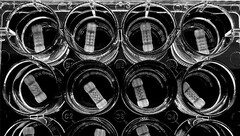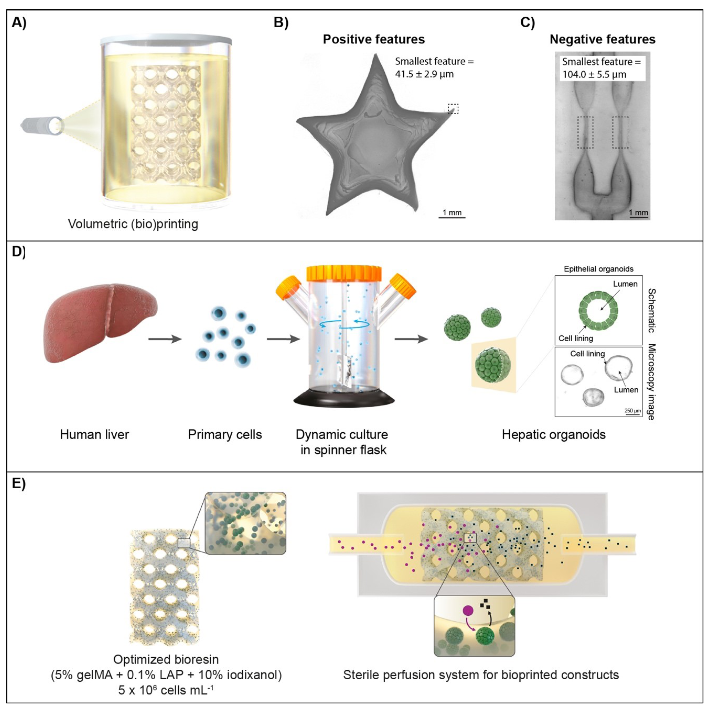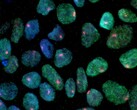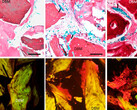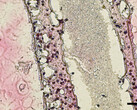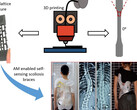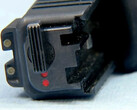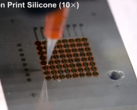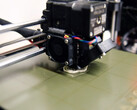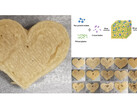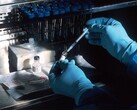The futuristic field of organ-mimicking 3D-printing, or the so-called bioprinting, is growing leaps and bounds. From 3D-printed prosthetic ears, to smart braces for scoliosis treatment, medical printing is getting traction and the latest University of Utrecht research success is just the next proof. In a volumetric bioprinting breakthrough, the scientists managed to create tiny liver pieces that remained able to perform their toxin elimination duties in the same way the liver organ in human bodies does. Instead of using nozzles as with traditional 3D-bioprinting methods that layer scaffolds and cell-infused hydrogels, risking mechanical damage on the cells during the deposition process, the research team used light.
The light pattern is projected over containers with transparent photosensitive hydrogel that holds liver-mimicking stem cell "organoids". The key volumetric printing breakthrough here was the use of a common contrast material - iodixanol - which made the cells transparent and allowed the 3D-printing light pattern to pierce through, modify and cluster the organoids instead of getting scattered and losing resolution. This was not only beneficial in terms of the lack of mechanical stress caused to the liver cells, but also because this method is much faster than traditional nozzle printing.
With volumetric 3D-bioprinting the University of Utrecht researchers managed to create the 12 liver-mimicking structures you see in the header image above in just 180 seconds. The so-called liver organoid building blocks were then capable of detoxifying impurities just like their human liver counterpart. The tiny artificial liver slivers "open new opportunities for regenerative medicine and for developing new patient-specific models to study new drugs against liver diseases," says Dr Riccardo Levato, an Associate Professor at University of Utrecht.


